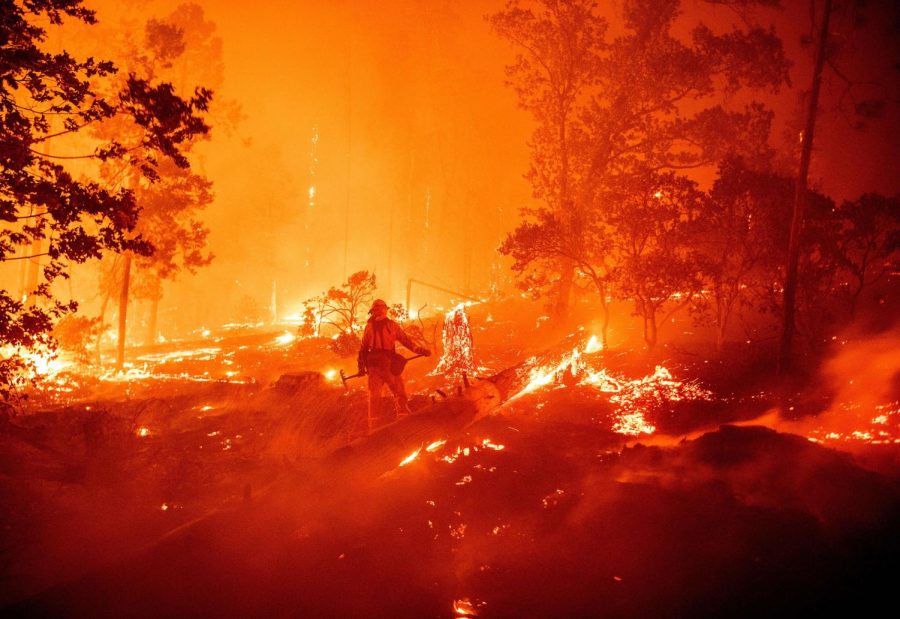What to Know About Wildfires this Season
April 20, 2022
The ongoing drought and hotter temperatures in California mean that wildfire season is here.
The smoky air and billowing clouds hovering in the skies, fire brushes ignite through the trees and homes: the telltale signs a wildfire has started and is permeating through the airways.
The National Significant Wildfire Potential Outlook issued an announcement on April 1, 2022, stating that the significant fire potential is expected to be normal for all areas during April and then above average across the Bay Area, Mid Coast-Mendocino, and Sacramento Valley-Foothill Predictive Services Areas (PSAs) for May.
A further expansion of above-normal significant fire potential is forecast across most elevations during June and July. Normally during June and July, one to three large fires occur within each PSA.
California’s onset drought and hotter temperatures rising means wildfire season are on its way; here’s what you should know to prepare.
“Californians should expect, and prepare for, another highly active fire season. High severity fires have been increasing in frequency and severity due to an accumulation of fuels, population increases in the Wildland Urban Interface, and dryer, hotter landscapes from drought & climate change,” stated Megan Katich, Communications & Outreach, California Fire Safe Council.
It is reported that nearly 85% of wildfires are caused by humans. Campfires that are not monitored, burnt debris, disregarded cigarettes, and other human hazards are acts of unintentional arson. However, global change remains the number one answer to why these wildfires are exasperating throughout the state.
“As we now know, California’s wildfire problem affects all of us in a variety of destructive ways. Since last year, we have an ever-growing dismal snowpack, continued minimal rainfall, and we continue to record high temperatures with volatile fuels surrounding us,” Katich continued.
WHO reports that the risk of wildfires increases in arid conditions, such as drought, and during high winds. Wildfires can disrupt transportation, communications, power and gas services, and water supply. They also lead to a deterioration of the air quality and loss of property, crops, resources, animals, and people.
Mostly in California, wildfires are ignited due to the dry, humid ground and vegetation. In the summer and autumn months, wildfires become intense and more prone throughout the region. Three elements are known to cause wildfires: fuel, air, and heat sources. Because of this, wildfires significantly affect our environment and ecosystem by releasing large quantities of carbon dioxide, carbon monoxide, and other particulate matter into the atmosphere.
The poor air quality and pollution lead to many health problems, particularly respiratory and cardiovascular. People living with asthma, high blood pressure, and any other relative health condition are more susceptible to having a higher risk of onset health concerns from poor air quality and pollutants.
Creating a defensible protection barrier around your home, making a ready kit, and forming an action plan will help to mitigate the risks.
“Mitigation efforts proven to work to ensure community resiliency which will assist in a future wildfire-resilient California are defenses such as home hardening and community hardening—fuel reduction, creating defensible space, communities should have a CWPP including proper evacuation planning and implementation strategies and resources and continued education on what can and should be done,” Katich explained.
Services are provided for homeowners to stay safe and have the necessary resources to prevent fires.
“Homeowners can ensure that they’re creating defensible space and being fire safe. During days where there are red flag warnings, pay attention, during vulnerable times, practice safety prevention measures like during BBQ season or the 4th of July when irresponsible behavior can be disastrous. More importantly, if you live in an at-risk area, get involved, find your local fire safe council on our website, donate or contribute to organizations like ours that are fighting the good fight, stay informed and help inform others – follow and engage with us on social media to help in amplifying resources and educational material,” stated Katich.
There are many ways to mitigate the risks of wildfires and take caution as the season approaches. For more information on staying safe, please visit here.
The California Fire Safe Council (CFSC), a California non-profit organization, was first formed as a project of the California Department of Forestry and Fire Protection (CAL FIRE) in 1993. The California Fire Safe Council is a statewide non-profit 501c3 organization serving as California’s leader in community resiliency and wildfire risk reduction. The California Fire Safe Council has provided over $118M to over 300 local fire-safe councils and other wildfire mitigation organizations and agencies for wildfire preparedness, prevention, and mitigation efforts over the last two decades.







